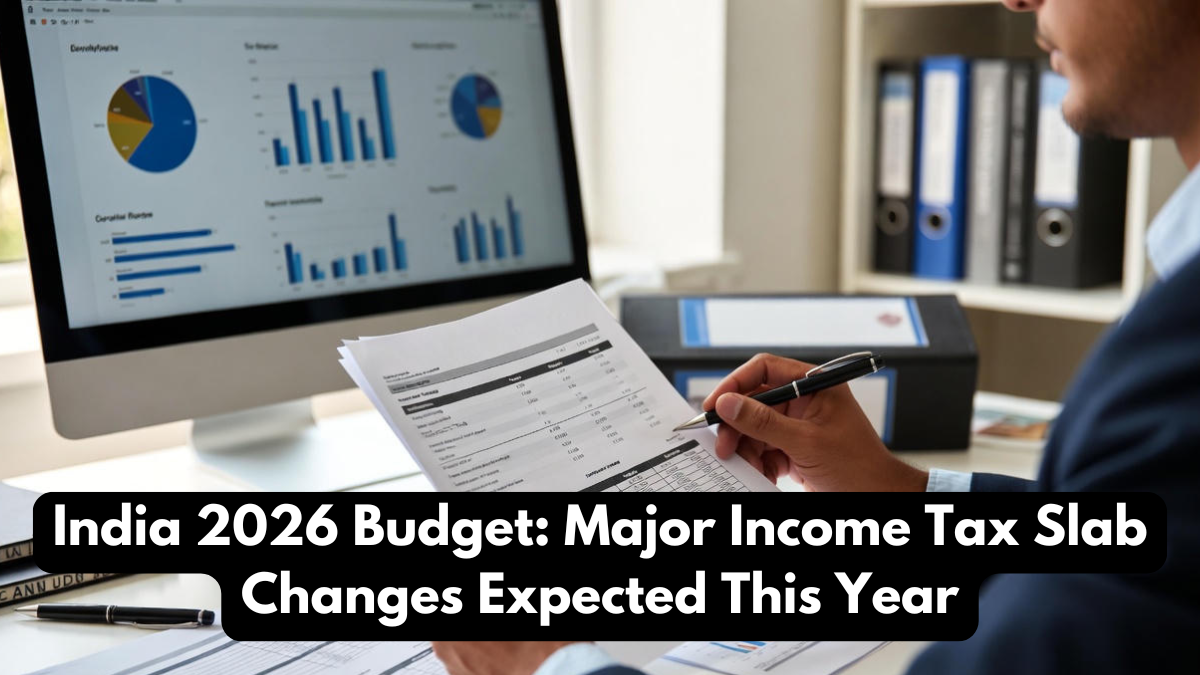The India Budget Update for 2026 is one of the most anticipated financial events of the year, especially for salaried individuals, small businesses and middle-income families. With changing economic conditions, rising inflation and evolving tax structures, the government is expected to introduce significant modifications to the Income Tax Slabs. Millions of taxpayers are eagerly waiting to see how these revisions will influence their take-home salary, savings and financial planning. The 2026 budget is expected to introduce reforms that simplify the tax system while offering relief to the majority of Indian earners.
The year 2026 brings new economic challenges and opportunities. The focus of the government appears to be on increasing disposable income, boosting consumption and providing relief to salaried taxpayers. As part of the India Budget Update, policymakers are assessing how to balance revenue generation with public welfare. Therefore, the expected changes to the Income Tax Slabs could have a deep impact on both short-term income and long-term financial planning.

Why Changes in Income Tax Slabs Are Expected in 2026
Over the last few years, taxpayers have been requesting rationalization of tax rates due to rising expenses and changing income patterns. The Indian middle class has faced higher living costs, especially in housing, education, healthcare and commuting. As a result, the government is considering revising the Income Tax Slabs to make taxation fairer and more aligned with current economic realities.
Another key reason for expected changes in the upcoming India Budget Update is the growing adoption of the new tax regime. While the government is promoting the new simplified regime with lower rates, many taxpayers still prefer the old regime due to deductions and exemptions. To encourage more people to shift to the new system, the government may revise slab rates, adjust standard deductions or provide additional rebates.
Expected Income Tax Slab Changes in India Budget 2026
While the final announcement will come during the official budget presentation, financial experts predict the following possible revisions. These changes aim to make taxation more progressive, supporting low- and middle-income groups while ensuring sustainable government revenue.
| Income Range (Expected) | Proposed Tax Rate | Type |
|---|---|---|
| 0 – ₹4,00,000 | 0% | New Regime (Expected Revision) |
| ₹4,00,001 – ₹8,00,000 | 5% | New Regime |
| ₹8,00,001 – ₹12,00,000 | 10% | New Regime |
| ₹12,00,001 – ₹18,00,000 | 15% | New Regime |
| ₹18,00,001 – ₹25,00,000 | 20% | New Regime |
| Above ₹25,00,000 | 30% | New Regime |
These projected slab changes indicate that the government may increase the zero-tax limit and reduce the burden on people earning between ₹6 lakh and ₹12 lakh annually. Such revisions would directly increase disposable income, stimulate demand and support economic growth.
Impact of Budget 2026 on Salaried Individuals
Salaried individuals are among the biggest beneficiaries of Income Tax Slab revisions. The India Budget Update 2026 is expected to relax taxation for employees by expanding the tax-free limit and enhancing the standard deduction. This could offer substantial annual savings, especially for those earning up to ₹12 lakh per year. The reduction of tax rates in middle-income slabs can put more money into the hands of consumers, which ultimately boosts household spending and the overall economy.
Moreover, the government may introduce additional incentives for those opting for digital investment platforms, retirement funds and health insurance plans. These measures align with the goal of simplifying Middle Class Finance and strengthening the social security framework.
Impact on Businesses and Self-Employed Professionals
Self-employed individuals, freelancers and small business owners also stand to gain from the new tax structure. The government may revise presumptive taxation limits, making it easier for small businesses to file returns under simplified rules. This aligns with Digital India initiatives and encourages more people to participate in the formal economy.
The India Budget Update may also focus on reducing compliance burdens for micro and small enterprises. By adjusting the Income Tax Slabs and increasing thresholds, the government aims to support entrepreneurship and domestic business expansion.
Expected Reforms Beyond Income Tax Slabs
Apart from slab revisions, the 2026 budget may introduce reforms in capital gains tax, incentives for renewable energy investments, encouragement for startups and enhanced tax benefits for first-time homebuyers. The government may also revise GST rules, promote Make in India initiatives and provide digital incentives for fintech-driven savings.
The budget might also focus on healthcare reforms and education subsidies, addressing the rising expenses faced by middle-class families. These additional reforms will indirectly support taxpayers by reducing their financial load.
Conclusion
The India Budget Update 2026 is expected to bring positive changes to the Income Tax Slabs, offering relief to the salaried class, small business owners and self-employed professionals. The proposed revisions aim to simplify the tax structure, increase disposable income and boost economic growth. As the cost of living continues to rise, these changes can make a meaningful difference in the lives of millions of Indian families.
The final announcement will confirm the exact slabs and benefits, but taxpayers can already anticipate a more balanced and supportive taxation system for 2026.
FAQ
What major changes are expected in the Income Tax Slabs for 2026?
The government may increase the tax-free limit to ₹4,00,000 and reduce rates for middle-income groups.
Will the standard deduction increase in the 2026 budget?
Experts expect the standard deduction to be increased to offer more relief to salaried individuals.
How will the new tax regime benefit taxpayers?
Lower tax rates and simplified filing processes will make taxation easier and more beneficial.
Will small businesses benefit from the new Budget 2026?
Yes, presumptive taxation limits and compliance rules may be relaxed to support small businesses.
Are these Income Tax Slab changes confirmed?
No, the final structure will be announced during the official 2026 budget presentation.
Click here to know more.